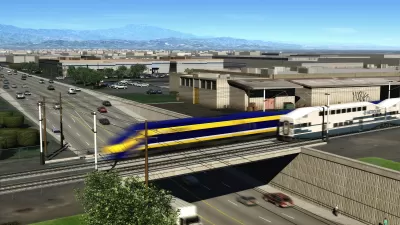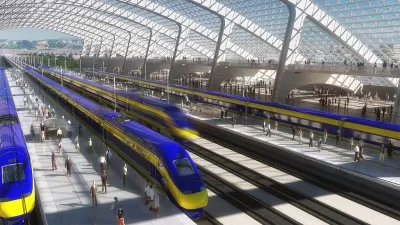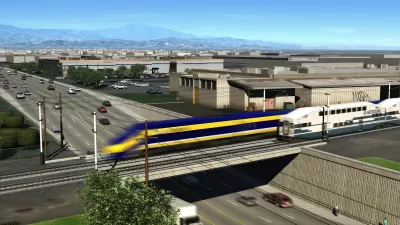Costs for the initial construction segment, 119 miles from Madera to just outside Bakersfield, jumped $2.8 billion in what the consultant called the "worst-case scenario," to $10.6 billion, or over $89 million per mile.

It wasn't actual construction costs for the Central Valley section but "higher costs for land acquisition, issues in relocating utility systems, the need for safety barriers where the bullet trains would operate near freight lines and demands by stakeholders for the mitigation of myriad issues," that caused the estimate to jump 36 percent, stated Roy Hill, a consultant for WSP (formerly Parson Brinckerhoff), at the California High-Speed Rail Authority meeting on Jan. 16, reports Ralph Vartabedian for the Los Angeles Times.
[The increase] suggests the authority and its consultants have vastly underestimated the difficulties of buying land, obtaining environmental approvals, navigating through complex litigation and much else.
It raises profoundly difficult questions about how the state will complete what is considered the nation’s largest infrastructure project with the existing funding sources.
Funds could come from the $9.98 billion bond measure approved by voters in 2008 which would "require the California High Speed Rail Authority to return to the state Legislature for a supplemental appropriation...The remaining bonds probably would cover the cost increases, but partly deplete funds for further construction beyond the Central Valley," notes Vartabedian.
James Moore, director of the transportation engineering program at USC, said the surge in costs is likely to foreshadow even greater future increases. On the horizon are more difficult segments, such as the long underground passage through the Tehachapi and San Gabriel Mountains and the route into the urban San Francisco Bay Area.
The 520-mile first phase of the project, from Los Angeles to San Francisco, was projected to cost $64 billion in the 2016 business plan. According to Proposition 1A, 2008, the trip shall not take more than 2 hrs, 40 minutes, traveling at "minimum speeds of 200 mph where conditions permit."
New CEO
"The board also voted Tuesday to name Brian Kelly as its new chief executive," adds Vartabedian. "As secretary of the California Transportation Agency, he had been deeply involved in the project." [See press release (pdf) and interview with New York Times].
Hat tip to Loren Spiekerman.
FULL STORY: California bullet train cost surges by $2.8 billion: 'Worst-case scenario has happened

Trump Administration Could Effectively End Housing Voucher Program
Federal officials are eyeing major cuts to the Section 8 program that helps millions of low-income households pay rent.

Planetizen Federal Action Tracker
A weekly monitor of how Trump’s orders and actions are impacting planners and planning in America.

The 120 Year Old Tiny Home Villages That Sheltered San Francisco’s Earthquake Refugees
More than a century ago, San Francisco mobilized to house thousands of residents displaced by the 1906 earthquake. Could their strategy offer a model for the present?

HSR Reaches Key Settlement in Northern California City
The state’s high-speed rail authority reached an agreement with Millbrae, a key city on the train’s proposed route to San Francisco.

Washington State Legislature Passes Parking Reform Bill
A bill that would limit parking requirements for new developments is headed to the governor’s desk.

Missouri Law Would Ban Protections for Housing Voucher Users
A state law seeks to overturn source-of-income discrimination bans passed by several Missouri cities.
Urban Design for Planners 1: Software Tools
This six-course series explores essential urban design concepts using open source software and equips planners with the tools they need to participate fully in the urban design process.
Planning for Universal Design
Learn the tools for implementing Universal Design in planning regulations.
Ada County Highway District
Clanton & Associates, Inc.
Jessamine County Fiscal Court
Institute for Housing and Urban Development Studies (IHS)
City of Grandview
Harvard GSD Executive Education
Toledo-Lucas County Plan Commissions
Salt Lake City
NYU Wagner Graduate School of Public Service




























